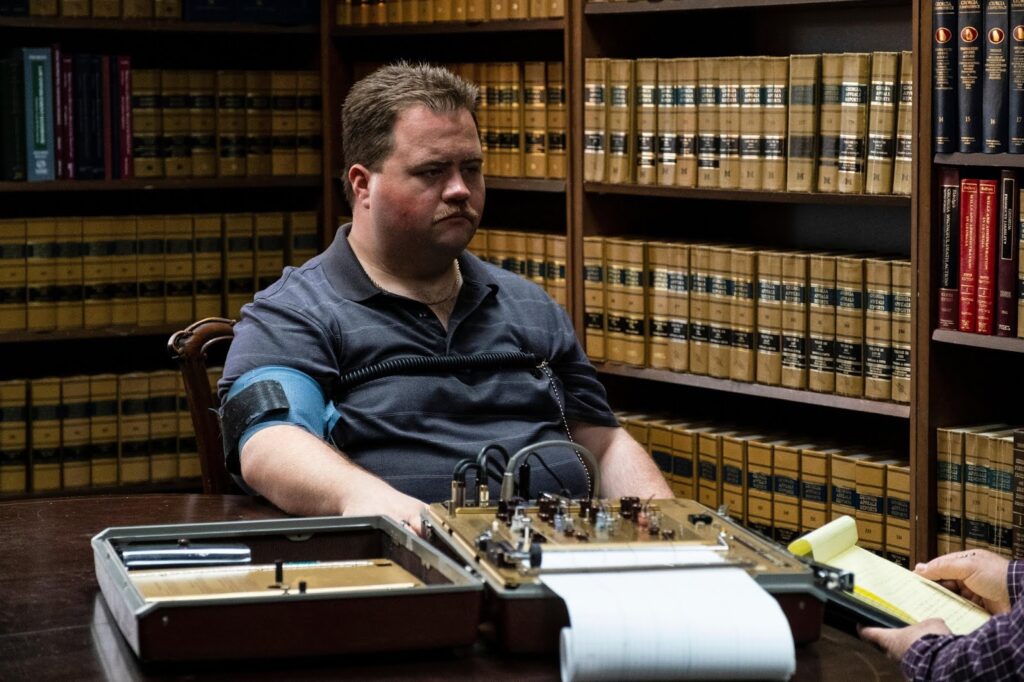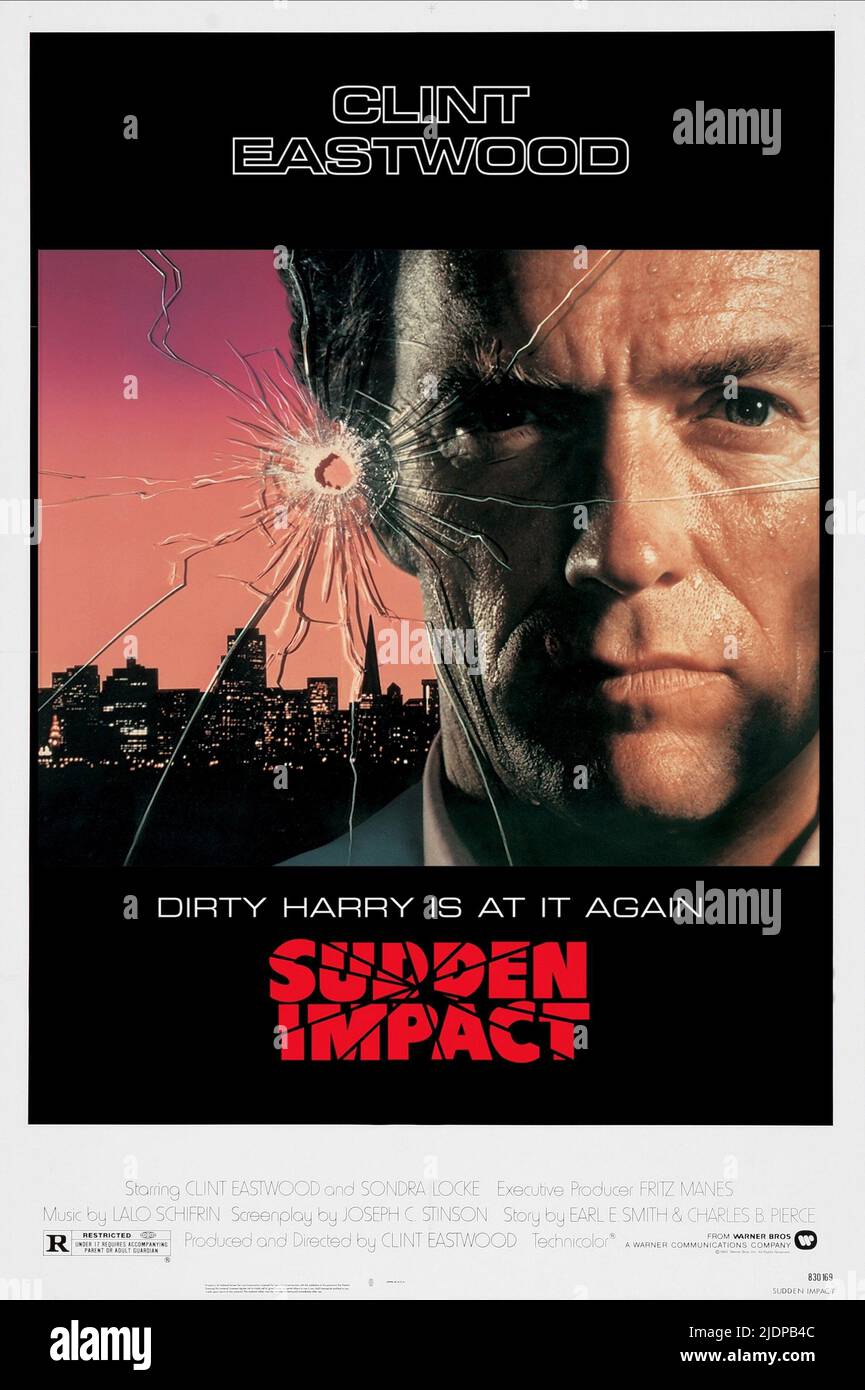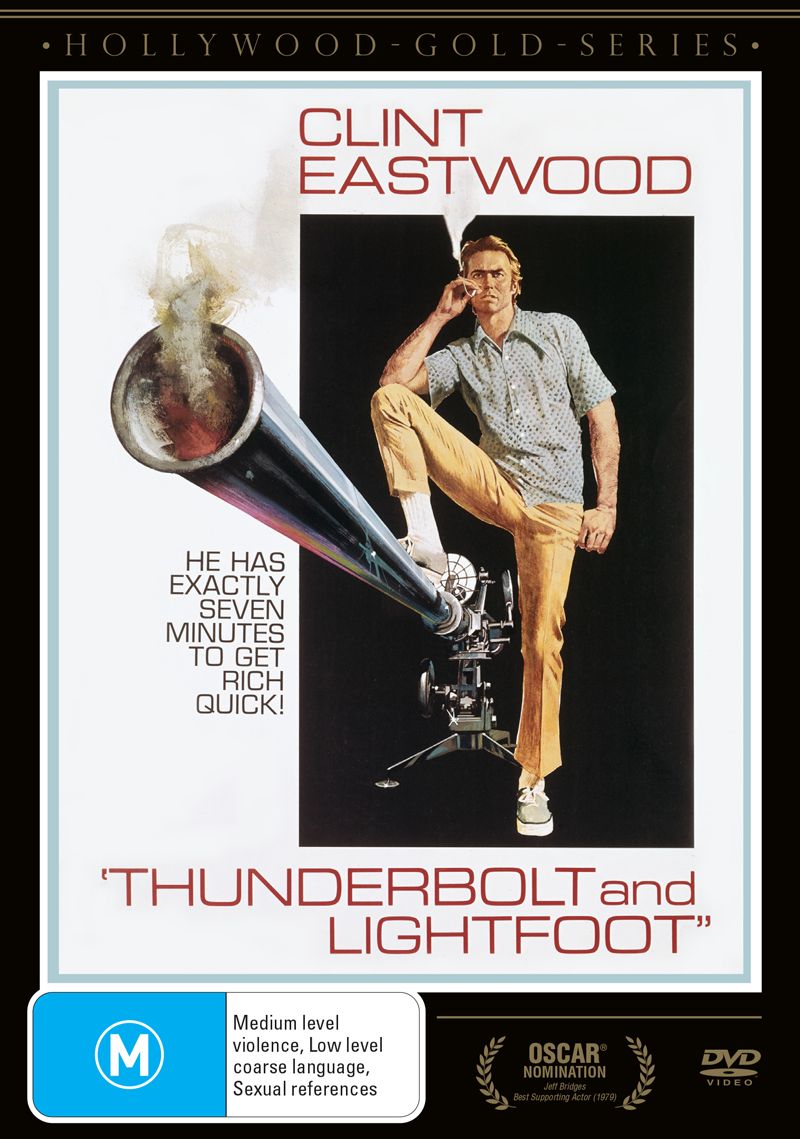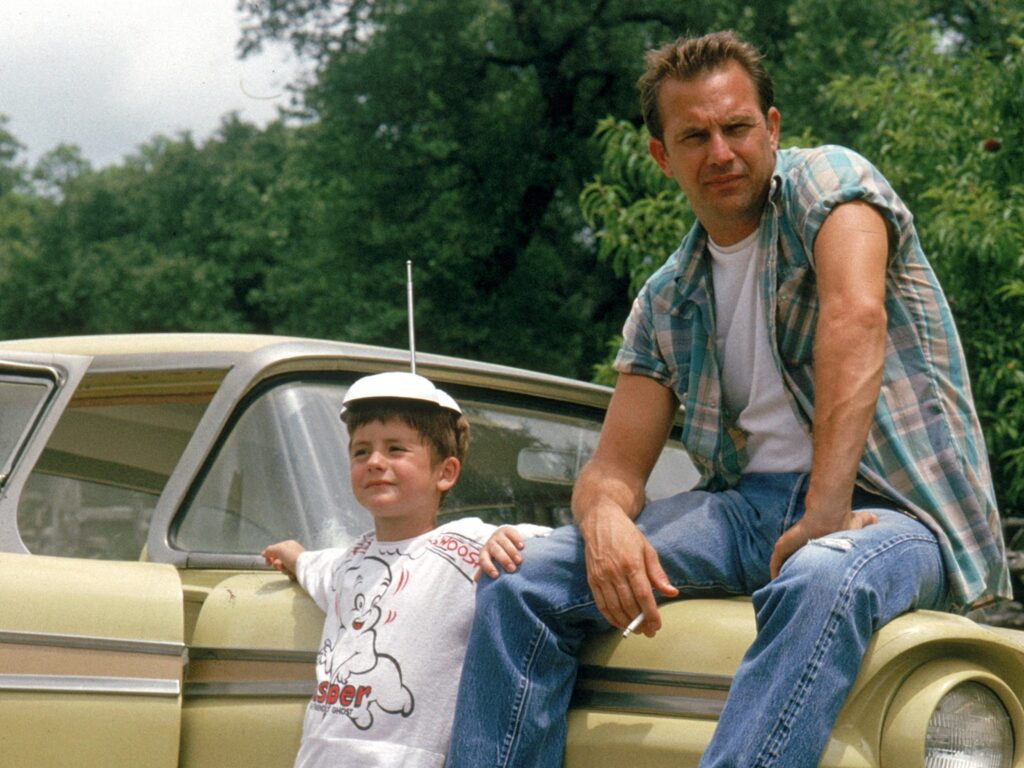
Clint Eastwood stands as an indisputable titan of Hollywood, a true icon whose career has spanned decades, gracing us with unforgettable performances and a distinct, robust filmmaking style. He’s undeniably on the Mount Rushmore of movie stars and filmmakers, an Academy Award-winning craftsman known for his concise, to-the-point approach that has hit more bullseyes than many working commercial directors today.
However, with a filmography as extensive and diverse as his, it’s inevitable that some cinematic treasures might slip through the cracks, failing to garner the widespread acclaim or audience connection they deserved upon release. While his signature Westerns and acclaimed directorial triumphs like “Million Dollar Baby” are widely celebrated, there exists a rich vein of films that, for various reasons, remain largely underrated, waiting for fans and cinephiles alike to rediscover their profound impact and entertainment value.
This article embarks on a journey to illuminate some of these overlooked masterpieces, offering a fresh perspective on movies that, despite initial muted responses or being overshadowed by his more famous works, are integral to understanding Eastwood’s full range as both a compelling actor and a visionary director. Prepare to delve into the depths of his hidden gems, starting with the first seven entries in our comprehensive list of his most underrated films.

1. **Blood Work (2002)**Based on Michael Connelly’s gripping novel and adapted by Brian Helgeland, the celebrated writer behind “Mystic River,” “Blood Work” is nothing short of a cinematic page-turner. It masterfully delivers a tightly wound, suspenseful B-movie experience, showcasing Eastwood’s ability to imbue even genre fare with his signature gravitas and efficiency. The narrative unfolds with a meticulous pace, drawing the viewer into its intricate web of crime and investigation from the very first frame.
Eastwood stars as an ex-cop, a role he navigates with a calm assurance that belies the intensity of the situation. One particularly memorable scene, where he retrieves a shotgun from a trunk to pursue a villain, is lauded as being worth the price of admission alone. It’s a classic cat-and-mouse chase, but elevated by Eastwood’s seasoned presence, creating a thrilling dynamic that keeps audiences on the edge of their seats throughout.
What truly elevates “Blood Work” beyond a standard thriller is the unexpected yet delightful chemistry between Eastwood and his co-star, Jeff Daniels. Their buoyant interaction provides a welcome lightness that skillfully undercuts the film’s inherent darkness and serious subject matter. This interplay adds a layer of depth, making the characters more relatable and the stakes feel even higher as they navigate the dangerous world of their pursuit.
The film’s focus on the psychological and physical tolls of a relentless investigation, combined with its sharp narrative and engaging performances, makes it a prime candidate for reappraisal. “Blood Work” exemplifies a well-executed crime drama that deserves far more recognition for its compelling story and Eastwood’s understated, powerful portrayal.
Read more about: Jack Betts, Versatile Actor from Broadway to ‘Spider-Man’ and Spaghetti Westerns, Dies at 96

2. **Changeling (2008)**”Changeling” initially met with a cold reception from both audiences and critics upon its 2008 release, a fate that, in hindsight, feels like a misjudgment. Now, nearly two decades later, the film resonates as a classic testament to Clint Eastwood’s growth as a filmmaker, particularly his evolving understanding that sometimes, words can wield more power than guns. It’s a profound departure from his earlier, more action-oriented roles, highlighting a different kind of strength.
Angelina Jolie delivers a tour-de-force performance as Christine Collins, a mother who bravely takes on a corrupt legal system, venal police, and an unyielding society. Her fight, unlike many of Eastwood’s iconic protagonists, is waged entirely without firing a single shot, relying instead on her unwavering will and a mother’s fierce determination. This narrative choice underscores a powerful message about resilience in the face of insurmountable odds, mirroring themes present in Eastwood’s broader body of work but expressed through a distinctly non-violent lens.
Eastwood, as the director, masterfully paints Collins’s internal battles with a bravura that he typically reserved for his hard-charging, masculine heroes. This shift in focus offers a compelling insight into the man and filmmaker Eastwood was growing into, revealing his deep respect for human fortitude and the quiet dignity of perseverance. The passion evident in his portrayal of Collins’s struggle demonstrates an empathetic and mature directorial hand.
“Changeling” is a harrowing, emotionally charged drama that dissects injustice and a mother’s unyielding quest for truth. Its historical context and Angelina Jolie’s powerful performance, guided by Eastwood’s nuanced direction, firmly establish it as a film that was ahead of its time and now richly deserves a higher standing in his celebrated filmography.

3. **Cry Macho (2021)**At 91 years old, Clint Eastwood delivered what many consider a graceful ‘single’ with “Cry Macho,” a charming and understated road movie that thrives on simple pleasures. The mere act of watching the legendary figure walk, talk, and drive across the screen becomes the film’s primary draw, a testament to his enduring screen presence and captivating aura. It’s a quiet meditation on aging, regret, and unexpected companionship.
This film, with its breezy storytelling, pairs wonderfully with his earlier work like “Bronco Billy,” sharing a similar spirit of a cowboy navigating a changing world. Eastwood directs and stars as a cowboy tasked with a journey to bring a young boy home from Mexico. While the plot itself might be light as paper, the narrative is imbued with an inherent heaviness simply by virtue of Eastwood’s presence.
Watching him on screen, it becomes impossible not to perceive a walking, talking story, where every grimace and every thoughtful pause tells a tale of a life fully lived. Eastwood captivates effortlessly, even in the most mundane moments, such as simply sipping coffee. His performance is a masterclass in subtlety, conveying profound emotions without grand gestures.
“Cry Macho” was met with a muted response upon its release in 2021, yet there’s a growing sentiment that time will be kinder to this potentially final performance from the legend. It’s a gentle, reflective piece that offers a poignant bookend to a monumental career, and its understated beauty is something that deserves to be savored and appreciated for years to come.
Read more about: The Devil Rides In: Clint Eastwood’s Underrated ‘High Plains Drifter’ Haunts Netflix with Its Vicious, Unromanticized Vision

4. **Every Which Way But Loose (1978)**”Every Which Way But Loose” stands as an anomaly in Clint Eastwood’s filmography, a massive box office hit that is frequently, and unfairly, written off as a mere joke. However, for those willing to look past its unconventional nature, it reveals itself as two hours of pure, unadulterated entertainment, featuring cinema’s favorite brawler as a veritable punching machine.
This film is a delightful romp filled with Clint throwing punches, protecting his beloved orangutan companion, Clyde, and even engaging in spirited brawls against neo-Nazis. The entertainment value is immense, further amplified by a shotgun-blasting Ruth Gordon in a memorable supporting role and an abundance of high-quality hand-to-hand combat sequences that showcase Eastwood’s physical prowess in a different light than his Westerns.
While the bizarre “love story” between Clint’s character, Philo Beddoe, and Sondra Locke’s country singer might be seen by some as holding “Every Which Way But Loose” back from achieving ‘popcorn movie greatness,’ it’s also part of its unique charm. The film’s blend of action and parody-level comedy is executed with such confident eccentricity that it unequivocally deserves a far better reputation than it currently holds.
It’s a film that demands to be enjoyed for what it is: a raucous, unapologetically fun ride that showcases Eastwood’s versatility and willingness to experiment with genres. “Every Which Way But Loose” is a cult classic in its own right, a testament to the fact that even Eastwood’s lighter fare can pack a significant punch and offer immense rewatchability for fans.

5. **The Eiger Sanction (1975)**In “The Eiger Sanction,” Clint Eastwood ventures into the pulpy world of espionage, adapting Trevanian’s spy novel and essentially becoming an “Americana Bond.” He takes on the role of Jonathan Hemlock, a retired assassin turned art professor who is reluctantly drawn back into his dangerous former life. The premise alone promises a thrilling blend of sophistication and brutal action, delivered with Eastwood’s distinctive flair.
Despite its intriguing concept and star power, the film was a disappointment at the box office upon its release and has not historically been heralded as one of Eastwood’s finest directorial efforts. This critical oversight, however, doesn’t diminish the sheer entertainment value embedded within its intricate plot and spectacular set pieces. It is a film that demands a closer look from contemporary audiences.
“The Eiger Sanction” is loads of fun, packed with classic spy hijinks, a colorful array of characters, and, as expected from Eastwood, plenty of muscular action. When the film isn’t playfully bordering on Bond parody, it delivers straight-faced thrills with timeless action sequences and breathtaking climbing scenes that remain impressive even decades later. The alpine photography alone is a visual treat.
It’s a high-stakes adventure that showcases Eastwood’s capability to helm and star in diverse genres, demonstrating his range beyond the Western or Dirty Harry archetype. For fans of classic spy thrillers and those who appreciate ambitious filmmaking, “The Eiger Sanction” offers a thrilling, often overlooked, cinematic experience that is ripe for rediscovery.

6. **Honkytonk Man (1982)**”Honkytonk Man” represents one of Clint Eastwood’s most profoundly personal and vulnerable cinematic endeavors, a rare instance where he truly bares his soul on screen. Back in 1982, audiences weren’t quite prepared for the filmmaker to portray a sensitive artist, a role that was very much against the stoic, tough-guy type he had cultivated. This departure likely contributed to the film’s tepid box office numbers.
Despite its commercial performance, “Honkytonk Man” shines as a gentle gem within Eastwood’s extensive filmography. He has often noted in the past that this particular story is one of the closest to a personal statement he has ever made, indicating its deep resonance with his own experiences and artistic sensibilities. This personal connection imbues the film with an authentic emotional core that sets it apart.
Eastwood plays Red Stovall, a dying country musician in the Great Depression era, embarking on a road trip with his 14-year-old nephew, Whit (played by Eastwood’s real-life son, Kyle Eastwood), to perform one last time at the Grand Ole Opry. Their journey is filled with life lessons, country tunes, and challenges like stealing chickens, evading the law, and Red’s battle with alcoholism, creating a rich tapestry of Americana.
The film beautifully explores themes of family, legacy, and the pursuit of a dream against all odds. Whenever Eastwood shares his love of music with audiences, with the notable exception of “Jersey Boys,” the result is always infused with palpable passion. “Honkytonk Man” is a tender, poignant, and deeply affecting film that showcases a different, more introspective side of the legendary icon, making it an essential watch for those seeking depth in his work.

7. **Juror No. 2 (2024)**Clint Eastwood’s latest directorial effort, “Juror No. 2,” serves as a compelling distillation of his enduring strengths as a director. When provided with a fine ensemble of actors and robust, compelling material to support them, Eastwood consistently demonstrates an uncanny ability to draw out the very best in his cast, guiding them to performances that transcend mere acting.
Through Eastwood’s sharpest lens, the audience is treated to seeing genuine characters emerge, rather than simply performers reciting lines. This keen focus on authentic human portrayal is a hallmark of his later career. In the morally challenging yet thoroughly entertaining “Juror No. 2,” Eastwood displays a relaxed confidence in his storytelling, navigating a seemingly simple premise with masterful control and nuance.
The film centers on a young man, played by Nicholas Hoult, who is called to serve as a juror in a case where he holds a very personal, and secretly significant, stake. The tension and ethical dilemmas that unfold are expertly handled, drawing the viewer into a web of suspense and moral ambiguity. It’s a testament to Eastwood’s ability to craft engaging narratives that resonate deeply with human experience.
Although “Juror No. 2” garnered critical acclaim, it unfortunately made little impact in traditional theaters. However, in a testament to the evolving landscape of film consumption, it has thankfully found a burgeoning audience on HBO Max. This digital rediscovery allows more viewers to appreciate its subtle power, the compelling performances, and Eastwood’s continued mastery behind the camera, solidifying its place as a critically valued, albeit commercially overlooked, entry in his impressive filmography.
Continuing our journey through the remarkable yet often overlooked corners of Clint Eastwood’s filmography, we delve into seven more underrated masterpieces. These films further underscore his unparalleled range as both an actor and a director, revealing thematic depth, memorable characters, and a lasting impact that demands a fresh look beyond their initial reception. Prepare to rediscover the profound artistry that defines these cinematic gems, completing our comprehensive list.

8. **Richard Jewell (2019)**Clint Eastwood once again turns his incisive directorial gaze toward challenging institutions of power with “Richard Jewell.” This compelling drama is a mostly true story that reconstructs the harrowing events surrounding the 1996 Summer Olympic Games bombing in Atlanta, focusing on the swift and unjust accusations faced by a man who was initially hailed as a hero. It’s a powerful testament to Eastwood’s ongoing commitment to narratives that expose societal flaws and champion the individual against overwhelming odds.
Paul Walter Hauser delivers a truly transfixing performance as Richard Jewell, portraying a man who, after discovering pipe bombs and saving countless lives, found himself tragically transformed into the prime suspect. The film meticulously charts his agonizing journey, highlighting how a rush to judgment by the media and law enforcement can shatter an innocent person’s life. Hauser embodies Jewell’s complex mix of earnestness, social awkwardness, and steadfast belief in the system, making his plight profoundly relatable.
Eastwood’s direction masterfully emphasizes that heroism manifests in many forms, challenging conventional notions of what a hero should look like. Richard Jewell, in his quiet, unassuming way, epitomizes this belief. The film is an all-around solid thriller infused with genuine heart, offering a gripping narrative that resonates deeply with themes of justice and public perception. Even for those familiar with the true story, its emotional weight and suspense remain potent.
Indeed, “Richard Jewell” is worth watching for the captivating performances alone, particularly from Hauser and the always-impressive Sam Rockwell. Their combined talent elevates the film, making it a powerful and necessary viewing experience that sheds light on a dark chapter of American history and champions the dignity of an ordinary man caught in an extraordinary ordeal.

9. **Sudden Impact (1983)**In “Sudden Impact,” Clint Eastwood not only reprises his iconic role as Harry Callahan but also steps behind the camera for the fourth entry in the beloved “Dirty Harry” franchise. After some of the lighter, more action-comedy tinged hijinks of “The Enforcer,” Eastwood takes his signature character in a starkly darker, more guttural direction. It’s a bold artistic choice that presents a trigger-happy Callahan almost as an inescapable force of death in a gritty, noir-inspired sequel, profoundly altering the franchise’s tone.
Eastwood’s portrayal of Callahan here is practically that of the grim reaper, frequently drenched in shadows that perfectly suit the more gut-churning, intense atmosphere of this installment. The film delves deeply into themes of evil and menace, which Eastwood embodies with an unshakeable intensity that harks back to the brooding power he displayed in films like “High Plains Drifter.” This approach makes “Sudden Impact” a compelling, if unsettling, examination of justice and retribution in their most extreme forms.
The film further benefits immensely from a standout performance by Sondra Locke, whose presence adds considerable depth and texture to the narrative. Her dynamic with Eastwood’s Callahan introduces layers of emotional complexity, elevating the film beyond a standard action thriller into something more nuanced and psychologically resonant. Her character’s motivations and interactions provide a crucial counterpoint to Callahan’s hardened resolve, enriching the overall story.
While “Sudden Impact” was a significant box office hit upon its release, it hasn’t always been noted as one of Eastwood’s more accomplished directorial efforts. However, upon reconsideration, its bold thematic explorations, masterful use of atmosphere, and memorable performances suggest it absolutely deserves a higher standing. It’s a fiercely directed and intensely acted piece that pushes the boundaries of the character and genre, making it ripe for reappraisal as a directorial achievement.

10. **Thunderbolt and Lightfoot (1974)**”Thunderbolt and Lightfoot” holds a special place in the hearts of devoted Clint Eastwood fans, a fact that’s undeniable. Yet, when general moviegoers and critics discuss the classic pictures from the legend’s extensive résumé, this brilliant Michael Cimino two-hander is regrettably not mentioned with the frequency it deserves. It remains a cherished secret among cinephiles, waiting for broader recognition as a cornerstone of 1970s American cinema and a standout in Eastwood’s diverse career.
Clint Eastwood has graced the screen in numerous buddy pictures throughout his career, but none quite manage to top the captivating dynamic established in Cimino’s crime film, which expertly pairs a tough, stoic Clint with a free-spirited, hippie Jeff Bridges. The stark contrast and eventual synergy between these two iconic actors create an on-screen magic that few other pairings have ever achieved. Their individual charisma coalesces into a truly unforgettable partnership, defining the very essence of the buddy-crime genre.
Watching these two ride alongside each other, observing their natural evolution from cautious associates to genuine friends and seasoned criminals, is an ultimately powerful delight. The film’s easygoing setup, lulling the audience into a sense of comfortable camaraderie, only serves to amplify the dramatic impact of its ending, which hits with the force of a ton of bricks. This narrative structure allows for both heartfelt connection and shocking emotional devastation, a testament to Cimino’s masterful storytelling.
Rarely in his storied career has Eastwood played devastation with such profound skill and raw emotion as he does in “Thunderbolt and Lightfoot.” His performance here is a masterclass in understated grief, demonstrating a vulnerability that was often hidden beneath his tough-guy exterior. While Cimino’s fixation on the intricate genre elements and the beats of the greater heist plot provides the framework, it sometimes distracts from the real, undeniable charm at the heart of “Thunderbolt and Lightfoot”—the evolving relationship between its titular characters.
The film, in many ways, is better appreciated when stripped down of its intricate heist intrigue and focused squarely on the compelling, deeply human relationship that blossoms between Thunderbolt and Lightfoot. Its enduring power lies in this connection. It makes one genuinely wish that Eastwood had matched himself with up-and-coming stars more often to serve as such a vibrant and effective foil, allowing for more such powerful character studies to emerge from his remarkable filmography.

11. **Tightrope (1984)**”Tightrope” stands as an intriguing, often overlooked entry in Clint Eastwood’s filmography, arguably one of three films in his career that lean heavily into the horror genre, alongside the unsettling atmospheres of “High Plains Drifter” and “Play Misty for Me.” This dark and atmospheric thriller delves into the murky psychological depths of a detective’s personal and professional life, presenting a side of Eastwood rarely seen and often misunderstood by audiences expecting his more conventional heroics.
In this film, Eastwood takes on the role of a perverse detective, Frank Rubino, who finds himself chasing down a serial killer through the shadowy, jazz-infused streets of New Orleans. The setting itself, with its rich musical heritage and gothic charm, provides a fittingly unsettling backdrop for the narrative, reflecting the kind of “jazz movie” aesthetic that Eastwood evidently loves. While Richard Tuggle is credited as the director, it’s widely acknowledged that Eastwood himself had a strong, guiding hand in shaping the final cut and overall vision of the film, imbuing it with his distinctive stylistic touches.
“Tightrope” is a film brimming with elements typically associated with psychological thrillers and horror. It features effective jump scares, a pervasive sense of dread amplified by its shadowy cinematography, and unforgettable, eerie sequences—including a menacing clown and a chilling balloon scene that reviewers have noted feels “more IT than Dirty Harry.” This unexpected foray into darker, more explicit horror territory, combined with its unique setting, makes “Tightrope” a fascinating anomaly. The film even includes a bizarre detail of a parade float depicting then-President Ronald Reagan, adding a layer of surreal, almost satirical commentary to its dark narrative.
This film, with its bold exploration of a detective’s darker side and its effective genre elements, certainly deserves renewed attention. It’s a testament to Eastwood’s willingness to experiment and push boundaries, showcasing his versatility as an actor delving into a complex, morally ambiguous character, and his influence as a filmmaker creating a genuinely unsettling and memorable cinematic experience that challenges audience expectations.

12. **White Hunter, Black Heart (1990)**”White Hunter, Black Heart” offers a fascinating, almost meta-cinematic experience, with Clint Eastwood playing a fictionalized version of the iconic filmmaker John Huston. He embodies the character of John Wilson, a director preparing his latest project in the exotic, yet perilous, landscapes of Zimbabwe. Eastwood brings every ounce of his bravura and swagger to this complex role, portraying a character who is as captivating as he is deeply flawed, offering a rare glimpse into the ego and artistry behind the camera.
This film stands as the legendary icon’s only movie explicitly about moviemaking, providing a unique introspection into the creative process and, more trenchantly, a critical look at the inherent dangers of ego. Wilson, much like his real-life inspiration, is obsessed with hunting an elephant, a pursuit that mirrors his own drive and perhaps his self-destructive tendencies. The film intelligently uses this parallel to explore the fine line between passion and obsession, between artistic ambition and reckless self-indulgence. It’s a narrative rich with symbolism and psychological depth.
“White Hunter, Black Heart” was unfortunately a box office miss for Eastwood, perhaps due to its unconventional subject matter and a protagonist who, while charismatic, is far from traditionally heroic. Despite its commercial performance, Eastwood’s own portrayal of Wilson is widely regarded as towering yet vulnerable. He skillfully navigates the character’s larger-than-life persona while subtly revealing the insecurities and inner turmoil beneath the surface. This nuanced performance showcases his range, moving beyond the stoic action hero.
Moreover, the film’s underlying skepticism about mythologizing tough guys and dissecting the often-problematic aspects of masculinity implicitly set the stage for what many consider to be Eastwood’s masterpiece: 1992’s “Unforgiven.” In “White Hunter, Black Heart,” one can see the foundational themes and character complexities that Eastwood would refine and expand upon, culminating in his definitive revisionist Western. For these reasons, it’s a vital, if often overlooked, piece in understanding the evolution of Eastwood’s artistic vision.

13. **A Perfect World (1993)**For many cinephiles and dedicated fans of Clint Eastwood, calling “A Perfect World” underrated feels almost contradictory. This 1993 crime drama, starring Kevin Costner, is widely considered a stone-cold classic, easily securing a spot in the actor-director’s top 10 directorial achievements. Yet, in the broader public consciousness and online discourse, it frequently falls into the category of “underrated,” a testament to its profound impact on those who have experienced its emotional depth and narrative brilliance.
“A Perfect World” resonates deeply with individuals who grew up as children of divorce, particularly those with absent fathers. It offers a poignant fantasy that many shy, abandoned, and insecure boys often entertained throughout their childhoods, without even being consciously aware of it. The film captures the yearning to idolize an absent dad and the bittersweet tendency to treasure any sporadic attention or minimal emotional connection as a most-prized possession, often leading to overcompensation for sins not their own.
At its core, “A Perfect World” is truly about the complex, often fractured, relationship between fathers and sons, and the deep, never-healing wounds inflicted at an early age that individuals carry throughout their lives. While its plot is loosely disguised as a fugitive on the run taking an 8-year-old boy hostage, the emotional gravitas and thematic richness elevate it far beyond a simple thriller, transforming it into a powerful psychological drama that explores the profound impact of parental absence and the search for connection.
The plot follows Butch Haynes (Kevin Costner) as he escapes from a state prison with his moronic and nasty cellmate, Terry (Keith Szarabajka), in 1963 Texas. This partnership is entirely by circumstance, as Butch despises Terry and plans to ditch him at the first opportunity. Before he can, Terry breaks into a home and attempts to molest a single mother of three, prompting Butch to intervene. The commotion wakes young Phillip (T.J. Lowther), who wanders into the kitchen to find the two strange men.
A crucial moment unfolds when a pistol lies before Phillip on the floor. Instead of snatching it, Butch gently asks the boy to pick it up, point it at him, and say, “stick ’em up.” This scene is not meant to be threatening but rather a profound, albeit unconventional, attempt to establish trust and comfort. Butch has no initial intention of kidnapping the child, but when a neighbor inadvertently walks in on them with a loaded shotgun, he quickly makes the decision to take Phillip with him to flee the scene. From this point, Red (Clint Eastwood), the chief of the Texas Rangers, immediately treats the situation as a kidnapping, initiating a relentless pursuit with his team, which includes an inexperienced criminologist (Laura Dern).
Read more about: Phil Mickelson’s Coveted Collection: A Deep Dive into the Champion Golfer’s High-Performance Fleet and Exquisite Lifestyle

14. **Escape from Alcatraz (1979)**When Clint Eastwood collaborated with director Don Siegel, audiences were consistently assured of a film of the highest standard—tightly paced, expertly crafted, and driven by Eastwood’s commanding star presence. “Escape from Alcatraz” stands as a powerful confirmation of this exceptional duo’s track record, delivering the kind of engaging, no-nonsense thriller that would be immensely welcomed and appreciated in today’s cinematic landscape. It’s a masterclass in tension-building and efficient storytelling that remains captivating decades later.
Based on a true story, the film chronicles bank robber Frank Morris’ (Eastwood) meticulously planned and audacious attempt to break out of the seemingly impenetrable federal penitentiary of Alcatraz. The premise is deceptively simple, yet it is executed with such precision and focused intensity that it becomes wholly satisfying. Siegel’s masterful direction, combined with Eastwood’s restrained yet compelling performance, transforms a straightforward narrative into a gripping battle of wits against an unyielding system.
Siegel’s meticulous pacing is a key component, heightening every move made by the characters as they inch closer to the climax. The characters’ motives are brilliantly conveyed through the patient staging of each scene, building natural, organic tension without resorting to forced exposition or melodramatics. There are few narratives inherently more enjoyable in movies than well-executed heist setups or escape plans, and “Escape from Alcatraz” understands this fundamental appeal, capitalizing on it with remarkable skill and restraint.
What makes “Escape from Alcatraz” so refreshing is its deliberate choice to curb any forced character ethos in the writing, instead focusing squarely on the outcome of the dungeon-like prison setting to elevate the fatalistic implications of the story. Eastwood, as Frank Morris, is as captivating as ever; he possesses enough inherent charisma to hold the audience’s attention completely, yet his performance is deliberately restrained, reflecting the harsh realities and repressive nature of prison life. This balance ensures the film maintains its gritty authenticity.
The lack of tiresome melodrama is a defining characteristic, imbuing the film with a working-man authenticity that is squarely in the wheelhouse of both Siegel and Eastwood. Just as many of Eastwood’s future films would aggressively reflect his image as a man of action and resolute determination, “Escape from Alcatraz,” with its straightforward thrills and satisfying payoffs, perfectly embodies this enduring facet of his persona. It’s a testament to the power of precise filmmaking and a star at the height of his craft.
As we wrap up our deep dive into Clint Eastwood’s most underrated cinematic achievements, it becomes abundantly clear that his filmography is far more expansive and nuanced than even his most celebrated works suggest. Beyond the iconic Westerns and the acclaimed dramas, lies a treasure trove of films that, for various reasons, have not received the widespread adoration they so richly deserve. From psychological thrillers to heartfelt road movies, from gritty crime dramas to introspective character studies, Eastwood’s hidden gems offer fresh perspectives on his multifaceted talent.
Read more about: The Devil Rides In: Clint Eastwood’s Underrated ‘High Plains Drifter’ Haunts Netflix with Its Vicious, Unromanticized Vision
These films are not merely footnotes but essential pieces in understanding the full spectrum of his artistic journey—a journey marked by fearless experimentation, profound thematic resonance, and an unwavering commitment to storytelling. So, next time you’re seeking cinematic gold, consider venturing beyond the well-trodden path and rediscover these overlooked masterpieces. They promise not just entertainment, but a deeper appreciation for one of Hollywood’s truly indispensable figures.



